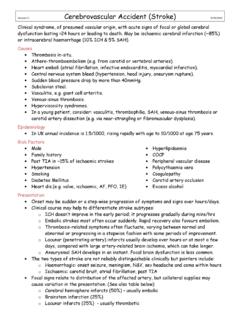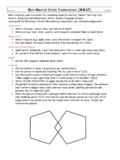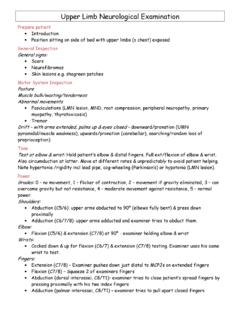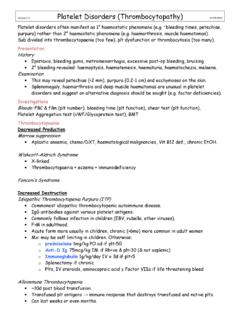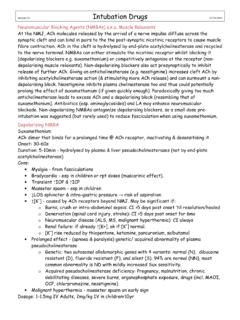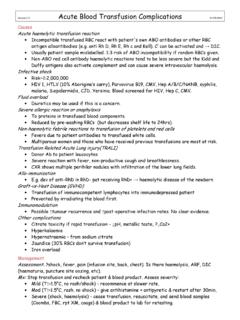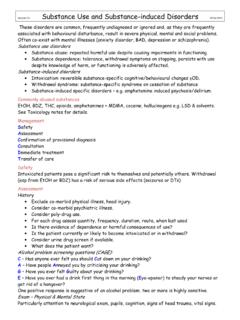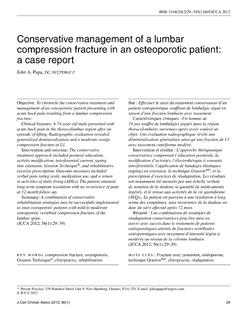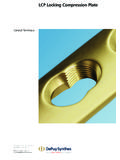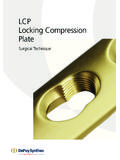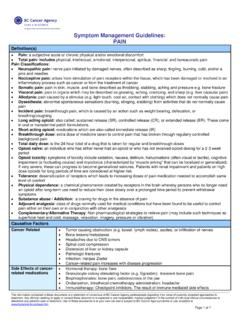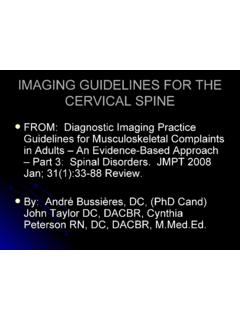Transcription of Pelvic Fractures - ambonsall.com
1 Version Pelvic Fractures 23/04/2012. Major Pelvic # result from very high energy trauma and have high mortality. However, minor, stable #s may only require a period of rest and analgesia followed by gradual mobilisation. Epidemiology ~1-3% of all skeletal injuries/. Found in 30% of multiply injured patients. Most due to MVA or fall from height. Elderly may just have simple fall. Classification Young classification: (Mechanism-based). Lat compression (LC): Acetabular Fractures . side-on MVA/car vs Ped Vertical shear (VS): Often a fall from height. Ant-post compression (APC). Open book #'s Head-on MVA/car vs Ped Combined mechanism (CM). Usually LC & APC. Mechanism Characteristics Hemipelvis Stability & Type Displacement LC I Ipsilateral sacral buckle Fractures (A), ipsilateral horizontal pubic rami Internal rotation Stable Fractures (B)(or disruption of symphysis with overlapping pubic bones).
2 LC II Type I plus ipsilateral iliac wing fracture or posterior SI joint disruption (R) Internal rotation Rotationally unstable, vertically stable LC III Type I or Type II plus contralateral pubic rami Fractures or disruption of Internal rotation+ Rotationally unstable, the sacrotuberous and/or sacrospinous ligaments. Open book contralateral ext rot vertically stable VS Vertical pubic rami Fractures , SI joint disruption (R, A) +/- adjacent Vertical (cranial) Rotationally unstable, Fractures (T) vertically unstable APC I Pubic diastasis < cm External rotation Stable APC II Pubic diastasis > cm, anterior SI joint disruption. Open book. External rotation Rotationally unstable, vertically stable APC III Type II plus posterior SI joint disruption External rotation Rotationally unstable, vertically unstable Tile classification Type A: o Stable or single ring #s: avulsion #, isolated pubic ramus #, iliac wing #.
3 Type B: o Rotationally unstable but vertically stable. o B1: 'open book' A-P compression #s symphysis separation & widening 1 or 2 SIJs o B2: ipsilateral compression causing the pubic bones to fracture and override. o B3: contralateral compression injury resulting in pubic rami #s on one side and compression SIJ injury on the other side. Type C: o Rotationally and vertically unstable. Pelvic ring completely disrupted at 2 points. o Associated with massive blood loss and a very high mortality. o Subdivided into: C1: unilateral, C2: bilateral, C3: involving acetabular fracture Key & Cornwell or Kane classification: Types similar to Tile with fourth type added for acetabular Fractures . Presentation Tenderness, bruising, swelling and crepitus of pubis, iliac bones, hips and sacrum. A thorough assessment for associated wounds and other injuries is essential.
4 Rectal examination: for anal tone, palpable Fractures and to detect bleeding, rectal tears and urethral damage. Signs of urethral injury in males include a high-riding or boggy prostate on rectal exam, scrotal haematoma, or blood at the urethral meatus. A Pelvic fracture in females is suggested by vaginal bleeding or a palpable fracture line on bimanual examination. Other signs of Pelvic fracture include: o Haematuria or rectal bleeding o Large hematoma or palpable fracture line felt on rectal examination (Earle's sign). o Haematoma above inguinal lig, or over proximal thigh or perineum (Destot's sign). o Retroperitoneal bleeding leads to loin bruising (Grey-Turner's sign). o Neurological and vascular abnormalities in either or both legs Instability on hip adduction and pain on hip motion fracture of the acetabulum.
5 Investigations Urinalysis: may show gross or microscopic haematuria. Bloods: FBC, UEC, G&H/XM, -hCG + other standard bloods for trauma Imaging: XR (AP pelvis) detects >90% injuries. Angiography if haemodynamically unstable and FAST/CT/DPL excludes significant intraperitoneal bleeding. CT if haemodynamically stable and good for acetabular injuries, Pelvic ring disruption & posterior element #s. May see contrast extravasation. Urethrography/cystography if ?urethral/bladder injury. Management Stable Fractures (Type A or LC I or APC I). Refer to ortho for analgesia, initial bed rest and then mobilisation (usually after 3 to 6 weeks). Avulsion Fractures : usually only require rest and pain relief. Larger avulsions, especially of the ischial tuberosity, may require ORIF. Management Unstable Fractures (all others).
6 Resuscitate as for any major injury. ABC, O2, 2xIVC, crystalloid+blood, analgesia Seek & treat hypovolaemia, anticipate coagulopathy and ensure blood is rapidly available as a massive transfusion may be required (APC 15u, VS 9u, LC req on ave). Avoid rolling the patient and instead perform a straight lift with a number of helpers. Stabilise #: o Pelvic sling if APC/open book # - not for LC or VS#. Other methods: C clamp. o External fixation (early if APC II, III or VS). o Extraperitoneal packing o Internal fixation (risks loss of tamponade, consider delayed ORIF in LC I & II). o Traction/ORIF for acetabular #s Pre-peritoneal packing, angiography & selective embolisation may be req for bleeding. Open surgery: if major visceral or vascular damage, ongoing blood loss, open Fractures .
7 Minimise movement and support an obviously unstable pelvis fracture associated with severe haemorrhage using using a MAST suit. Do not catheterise if urethral injury is suspected. Major Pelvic Trauma Algorithms Avulsion Fractures ASIS Sartorius in athletes. Posterior spine by erector spinae AIIS rectus femoris Iliac crest by direct violence Ischial tuberosity hamstrings Symptomatic Rx. crutches Complications 50% require transfusion Neural lumbar & sacral plexuses (~10%). Malunion or non-union, leg-length discrepancy, low back pain. Disabling in up to 50%. Increased incidence of thrombophlebitis. Intrapelvic compartment syndrome. Vascular common iliac artery divides at SIJ, internal iliac remains intra- Pelvic , superior gluteal artery at greater sciatic foramen Associated lower GIT, bladder, urethral prostate or vaginal damage is common.
8 Associated thoracic and abdominal injuries occur in 10-20%; massive internal bleeding. Sexual dysfunction may be a long-term problem. Prognosis Prognosis varies depending on severity of fracture and associated injuries. 5-20% mortality overall, 30% if open fracture and 50% if hypotensive on arrival. Prevention Car safety (seat belts, air bags) and any safety procedure to reduce risk of high falls.
